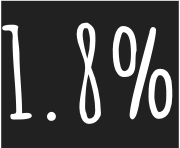A year later: Here’s how to fix the gender pay gap…
Yesterday…
Was International Women’s Day with a CTA that felt very Brainlabs:
#BeBoldForChange
We have been bold indeed. And great change has occurred.
Last Year…
I wrote an article about how we were going to fix the gender pay gap. We had just introduced our pay gap tax, a measure praised by the Guardian as an effective solution to a problem that has persisted far longer than it ought to have done. We were also implementing a number of other strategies related to office culture, recruitment, and performance, designed to improve gender equality in the workplace.
This Year…
I am proud to report the remarkable success we have had in addressing this issue. The pay gap has closed and we have made great strides towards ensuring gender equality throughout the company, in the many areas that a workplace encompasses.
In true Brainlabs style, let me provide some solid data to accompany these exciting words.

(Percentage of female staff in Company, Tech, Senior Team)
It’s practically a 50-50 split for overall staff at Brainlabs, which is pretty amazing. Tech is still getting there, but bear in mind it has doubled its percentage of women since last year and that the UK average for women in tech is roughly 17%. Female senior leaders have also shot up by 50%, much closer to an equal weighting.

That’s the current pay gap (in favour of men), down from 8.6% last year — another massive step forward, especially considering the UK average of 19%, which is pitiful (to use a polite term).
The Future…
Is going to require a more subtle approach to ending gender inequality.

We are doing much much better, but of course we are not done yet. Conspicuous things like equal pay will always steal the headlines and shape government policy, but it’s the unconscious forms of inequality that require the greatest effort.
It’s not uncommon, for example, for people to scoff at the idea of language neutrality being important, when in fact it’s one of the many ways in which gender inequality has been embedded into our culture. We need to force ourselves into awareness of the biases behind gender discrimination, so that we can overcome them.
So here’s to another year of leading the fight against gender inequality! When next year comes, who knows how far we might have progressed? I, for one, am excited to find out.




